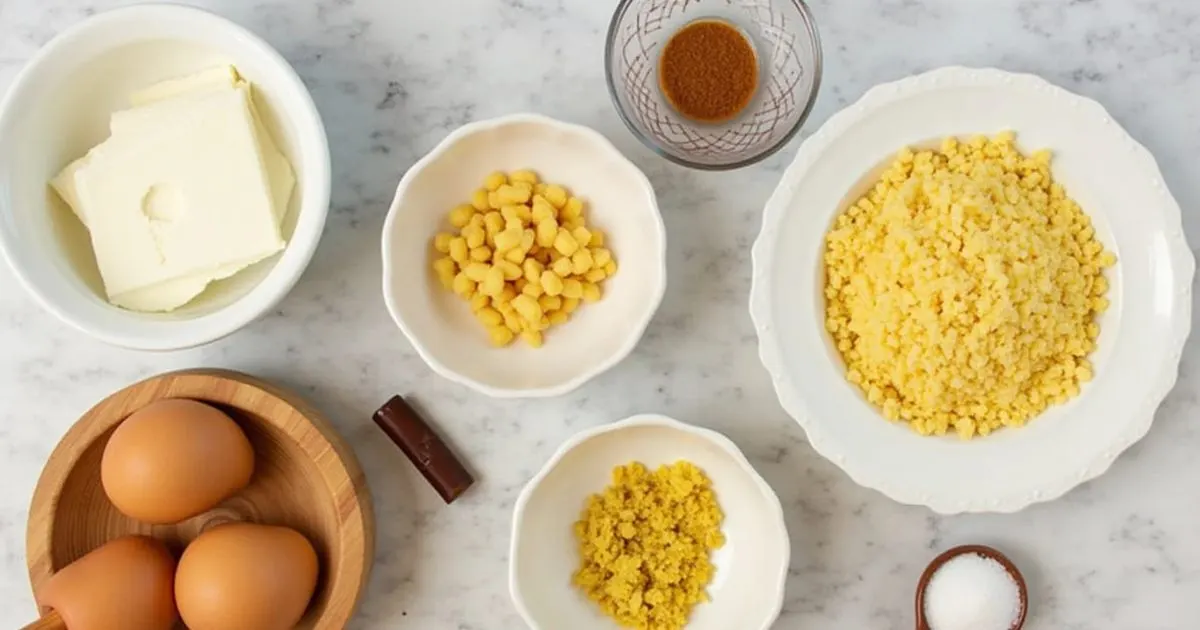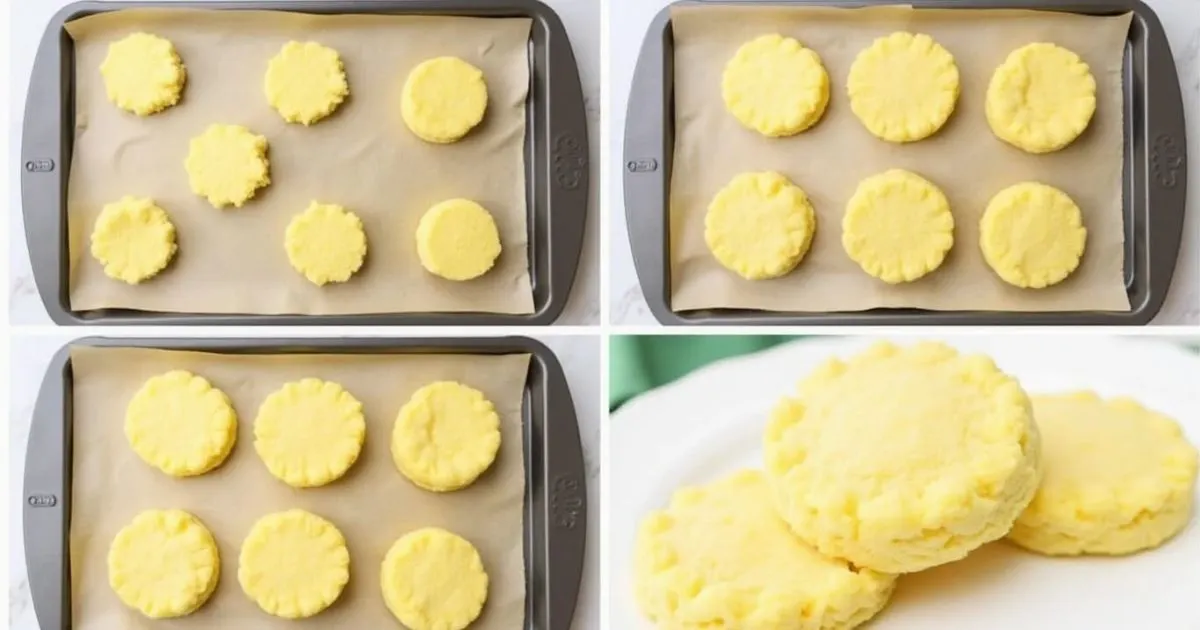Breakfast is often hailed as the most important meal of the day, and what better way to begin your morning than with a warm, freshly baked biscuit? These breakfast biscuits are a beloved staple in many homes, offering the perfect combination of flaky, soft texture and savory flavor. Whether you enjoy them alongside a hearty scrambled egg or spread with butter and jam, these biscuits are sure to make your morning feel special.
Table of Contents
The Story Behind Breakfast Biscuits
Biscuits have a rich history in the culinary traditions of the Southern United States, where they are an essential part of breakfast tables. The humble biscuit has roots in British scones, but over time, the Southern biscuit has evolved into a unique dish, characterized by its light, tender crumb and buttery layers. They were once a simple food, made with minimal ingredients like flour, butter, and buttermilk, but today, they have become a canvas for endless variations.
Growing up, I fondly remember the smell of biscuits baking in the oven early in the morning. My grandmother would often make them from scratch, using the same recipe that had been passed down through generations. The love and care that went into each batch made the biscuits taste even more delicious. Today, I’ve put my own spin on this classic recipe, adding a few ingredients that elevate the flavor while keeping things simple and easy to follow. This recipe combines the traditions of the past with a touch of creativity, so you can enjoy a biscuit that feels both timeless and fresh.
Ingredients for Perfect Breakfast Biscuits
To create these flaky and flavorful biscuits, you’ll need just a few basic ingredients. The quality of each ingredient plays a significant role in the final result, so let’s talk about the best options to choose:

Ingredient Table
| Ingredient | Amount | Tips for Selection |
|---|---|---|
| All-purpose flour | 2 cups | Use unbleached for a pure, clean flavor. |
| Baking powder | 1 tablespoon | Make sure it’s fresh for maximum lift. |
| Salt | 1 teaspoon | Opt for sea salt for a more nuanced flavor. |
| Unsalted butter | ½ cup (1 stick) | Use cold butter, cut into small cubes, for the flakiest texture. |
| Buttermilk | ¾ cup | For tang and moisture, opt for full-fat buttermilk or make your own by adding a tablespoon of lemon juice to regular milk. |
| Honey (optional) | 1 tablespoon | Adds a subtle sweetness, optional for those who like a touch of sweetness in their biscuits. |
| Fresh herbs (optional) | 1 tablespoon chopped | Consider adding rosemary or thyme for extra flavor. |
Ingredient Tips
- Flour: For best results, always sift your flour before mixing. This ensures that it’s aerated and free of lumps, which helps the biscuits rise perfectly.
- Butter: Keep the butter as cold as possible. This is essential for creating those flaky layers that are the hallmark of a great biscuit. You can even freeze the butter for about 10 minutes before incorporating it into the dough.
- Buttermilk: If you don’t have buttermilk on hand, you can easily substitute with regular milk and a splash of vinegar or lemon juice. Just let it sit for a few minutes to curdle before using it in the recipe.
- Herbs and Honey: These are optional, but I highly recommend adding them for extra flavor. The fresh herbs bring a savory note, while the honey balances the richness of the butter.
Step-by-Step Instructions

Step 1: Heat the Oven and Ready the Baking Sheet
Before starting on the dough, set your oven to 450°F (230°C) and prepare the baking sheet. The high temperature is key for achieving the perfect rise and golden color on your biscuits. Line a baking sheet with parchment paper or a silicone baking mat to ensure easy cleanup.
Step 2: Mix Dry Ingredients
In a spacious bowl, combine the flour, baking powder, and salt. Stir well to ensure everything is evenly distributed. The dry ingredients create the foundation of the biscuit dough, so mixing them well is crucial for an even texture.
Step 3: Add Cold Butter
Next, incorporate the cold, cubed butter into the flour mixture. Using a pastry cutter or your fingers, work the butter into the flour until the mixture resembles coarse crumbs with pea-sized chunks of butter still visible. This process is crucial for the flakiness of the biscuit. The bits of butter will melt during baking, creating pockets of steam that result in the tender layers we love.
Tip: If you don’t have a pastry cutter, you can also use two forks or even your hands to quickly cut the butter into the flour. Just be sure not to overwork it.
Step 4: Add Buttermilk
Create a well in the center of your dry mixture and pour in the cold buttermilk (and honey, if using). Gently stir with a wooden spoon or spatula until the dough just begins to come together. Take care not to overmix, as this can cause the biscuits to become dense and tough. The dough should be slightly sticky but manageable. If the dough is too dry, add one tablespoon of buttermilk at a time until it comes together.
Step 5: Knead the Dough Lightly
Move the dough onto a floured surface. Gently fold the dough over itself a few times (about 4-6 folds) to bring it together. This step helps to create layers in the biscuit, but you want to keep it light and quick to avoid overworking the dough.
Tip: If you want extra layers, you can roll the dough out into a rectangle, fold it into thirds like a letter, and repeat this process once more.
Step 6: Shape the Biscuits
Pat the dough into a ¾-inch thick rectangle. Using a biscuit cutter or a drinking glass, cut out biscuits from the dough. Press the cutter straight down—don’t twist it, as this can seal the edges and prevent the biscuits from rising evenly. Gather the leftover dough, reroll it gently, and cut out more biscuits until all the dough is used up.
Step 7: Bake the Biscuits
Place the biscuits on your prepared baking sheet, making sure they are close together for soft sides or spaced apart for crispier edges. Place in the preheated oven and bake for 10-12 minutes, or until the tops are a rich golden brown.
Tip: If you like an extra golden top, brush the tops of the biscuits with a little melted butter before baking.
Step 8: Cool and Serve
After baking, let the biscuits cool for a few minutes before serving. They’re best enjoyed warm, straight from the oven. You can serve them with butter, jam, honey, or even a dollop of gravy if you’re in the mood for a more savory option.
Expert Tips for Perfect Breakfast Biscuits
1. Don’t Overmix the Dough
Overworking biscuit dough is one of the most common mistakes, and it leads to dense, tough biscuits. Stir the dough just until it comes together, and remember that a little bit of flour on your hands is your friend when handling the dough.
2. Use Cold Butter and Buttermilk
Cold ingredients are a must when making biscuits. The cold butter will create flaky layers, while the cold buttermilk will help the dough rise.
3. Baking Time
Every oven is different, so keep an eye on your biscuits after about 10 minutes of baking. If they’re not golden brown yet, let them bake for an additional 1-2 minutes.
4. Substitute Ingredients
Feel free to experiment with the recipe by substituting whole wheat flour for some of the all-purpose flour for a heartier biscuit. You can also add shredded cheese or cooked bacon into the dough for extra flavor.
5. Make Ahead
If you’re short on time, you can prepare the dough ahead of time and refrigerate it for up to 24 hours before baking. You can also freeze unbaked biscuits and bake them straight from the freezer. Just add a couple of extra minutes to the baking time.
Conclusion: Make It Your Own
There’s something magical about homemade biscuits—flaky, buttery, and comforting. This breakfast biscuit recipe is simple, but it allows for plenty of room to experiment and make it your own. Whether you add fresh herbs, cheese, or even a touch of sweetness, you can customize it to fit your taste perfectly.
As you dive into this recipe, I encourage you to embrace your creativity. Try serving your biscuits with a range of sides, from crispy bacon to creamy scrambled eggs, or enjoy them as a snack with a dollop of jam. Biscuits are meant to be shared, and I hope this recipe brings a little joy to your mornings. Happy baking!
FAQ
How do I make biscuits without buttermilk?
You can substitute buttermilk by adding 1 tablespoon of lemon juice or white vinegar to a measuring cup and filling it with regular milk until you reach ¾ cup. Let it sit for 5 minutes before using.
Can I make the dough ahead of time?
Yes! The dough can be made up to 24 hours ahead and kept in the refrigerator. Just be sure to handle the dough gently when shaping the biscuits.
Why are my biscuits flat?
Flat biscuits often result from overmixing the dough or using old baking powder. Make sure your ingredients are fresh, and avoid overworking the dough to keep them light and fluffy.

